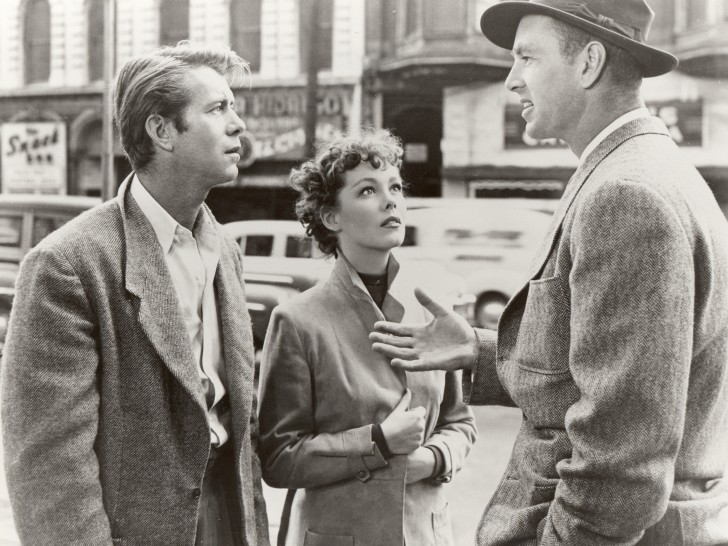
Crime Wave
Plunder Road
One of the great Hollywood films by the two-fisted and one-eyed Hungarian émigré director André De Toth, Crime Wave is a brisk cops-and-robbers caper that exemplifies the lean economy, expressive style and dark sense of embittered injustice shared by his Westerns and crime films of the late 40s and 50s. When De Toth rejected Jack Warner’s choice of Humphrey Bogart and Ava Gardner as leads, the mogul angrily cut both budget and production schedule in half but reluctantly allowed De Toth to cast Sterling Hayden as the film’s antihero, a tough cop leaning hard on a parolee he suspects, almost correctly, of covering for a dangerous band of robbers recently escaped from the pen. Little does he know that the crooks are hiding in plain sight, holed up in the cold water flat of the hapless parolee and his young wife, who are held hostage and forced to join a recklessly audacious heist. Master cinematographer Bert Glennon made it possible for De Toth to shoot quite daring—for the time—night scenes on location, allowing the film to dramatically extend the neorealist style popular in post-WWII crime dramas.
Raised in Paris, where he befriended Godard and Chabrol, Hubert Cornfield brought a stylized European flair to his low-budget films of the 1950s. With his taut heist thriller Plunder Road, one can also detect a clear influence on the late sangfroid crime films of Jean-Pierre Melville, beginning with an incredible extended opening sequence: a deftly choreographed freight train robbery by silent, masked bandits impervious to the torrential rain that lashes about them. Wasting no precious time, Cornfield’s world-weary robbers divide the loot into three Los Angeles-bound getaway trucks, setting into motion a tense race against luck, each moment on the road fraught with danger. Rarely have routine traffic encounters been so loaded with the tension conveyed by the veteran actors assembled by Cornfield, featuring Thirties musical star Gene Raymond as the team’s suave mastermind and the ever-anxious Elisha Cook Jr. as their guilty conscience. Making brilliant use of the black-and-white widescreen, master DP Ernest Haller crisply delineates the action with noir abstraction while using bold Pop imagery of roadside Americana to ironically punctuate the perilous criminal journey.





































